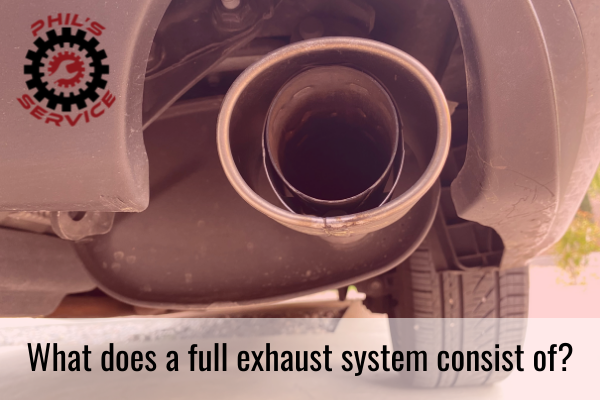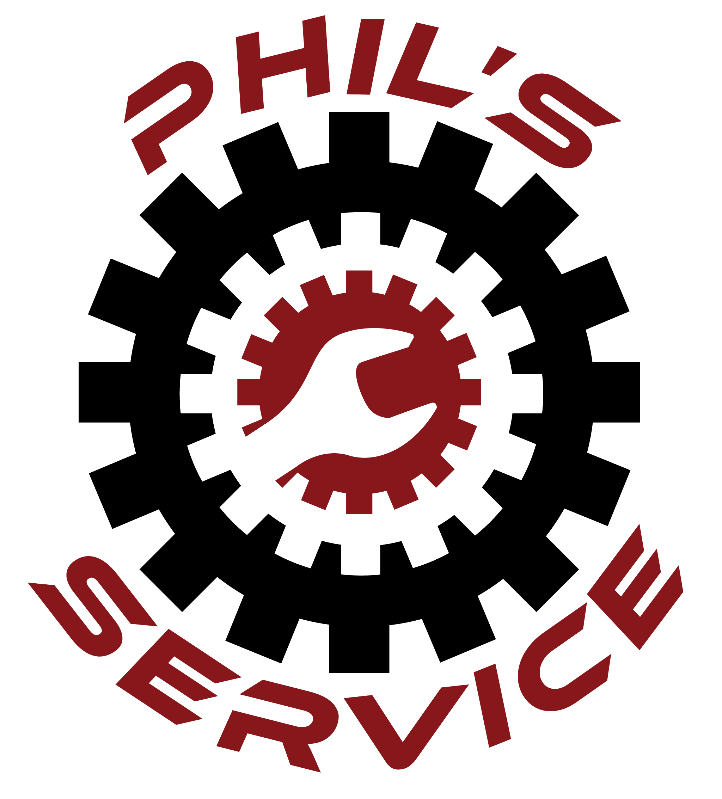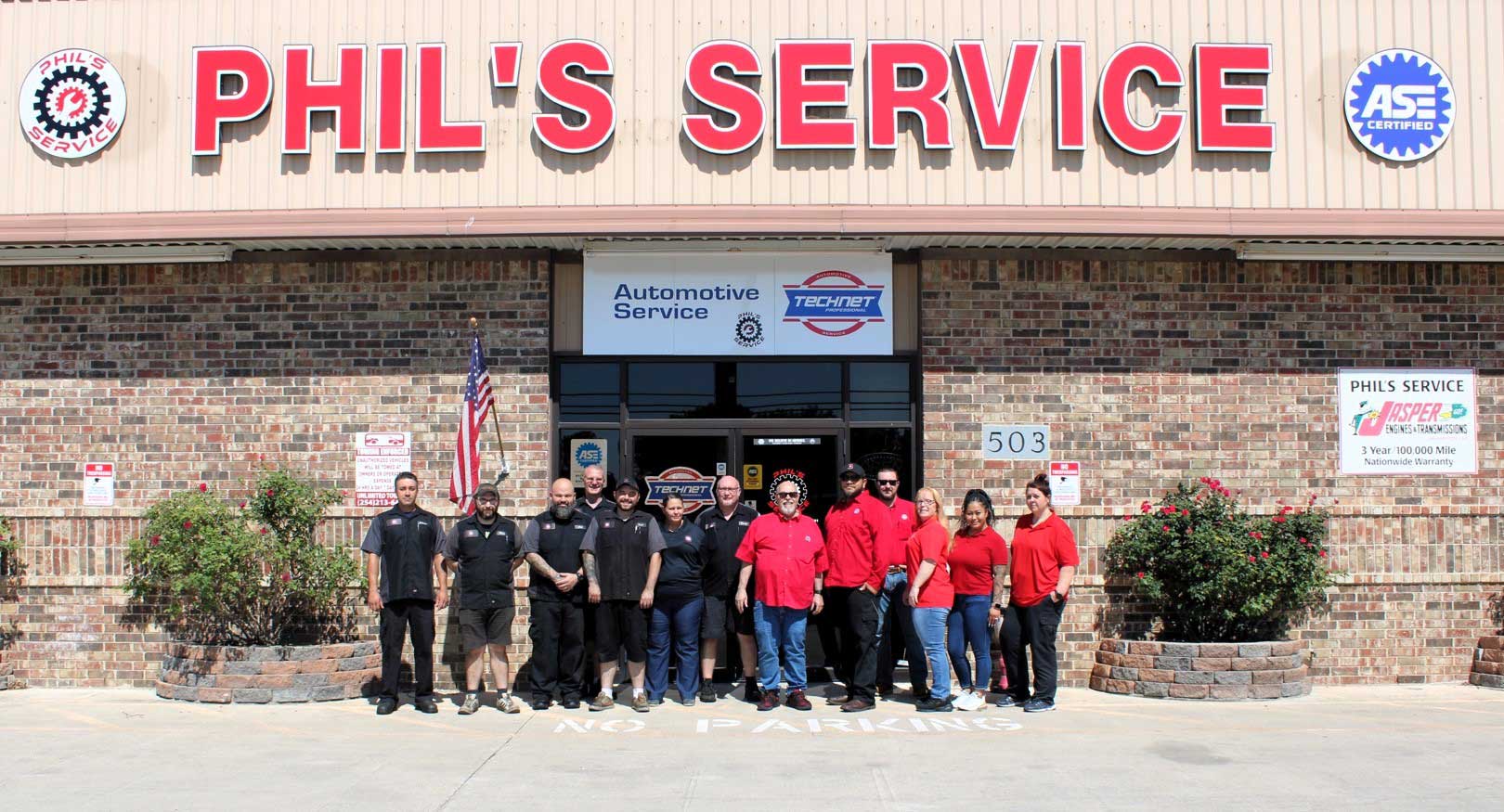Because the muffler is the only part of the exhaust system that can be seen, many people don’t know that the exhaust system is more than just a muffler. It is actually a complex series of pipes that run under your car connecting the muffler and catalytic converter. The components of the entire exhaust system work together to control noise and to route the exhaust fumes away from passengers, out of the rear of the car, and into the atmosphere. And, importantly, the exhaust system makes sure there is the right amount of backpressure into the engine, improving its fuel-burning efficiency and performance.
Wondering what does a full exhaust system service consist of? Here are the key components of an exhaust system that should be included in an inspection:
- Exhaust Pipes: Used to funnel exhaust fumes to the back of the vehicle.
- Exhaust Manifold: Collects the gases from all cylinders and releases them through a single opening, like a funnel.
- Catalytic Converter: Transforms pollutants into water vapor and other less harmful gases, thereby reducing harmful emissions.
- Muffler: A metal pipe with holes, baffles, and chambers that helps reduce exhaust noise.
- Resonator: Along with the muffler, it works to reduce noise.
- Tail Pipe: Located at the back of the car, the tailpipe carries exhaust gases away from the vehicle and releases them into the atmosphere.
A noisy muffler is one of the first signs of problems in the exhaust system. There are two common causes for damage to a muffler:
- Exhaust Leaks – A noisy muffler means it is likely that the exhaust system has developed a leak. This not only decreases fuel efficiency but also allows harmful fumes to enter the cabin of your car.
- Rust – Water vapor produced by the catalytic converter can cause rust to develop if it doesn’t have time to fully evaporate each time the car is driven, especially true for driving short distances. Add to this problem, sulfur (a by-product of engine emissions), can mix with the water and form a corrosive acid that eats away at the muffler.
A word of advice: Have the exhaust system and muffler inspected at each oil change for leaks or rust! To prevent damage to your car or even your health, have any problems repaired as soon as possible!
Wondering what does a full exhaust system service consist of? Contact our ASE Certified technicians at Phil’s Service for more information and to schedule an inspection of the muffler and exhaust system. Our auto shop proudly serves residents in the community of Killeen, TX, and the surrounding area.
Wondering what does a full exhaust system service consist of? Ask the experts at Phil’s Service for more information about exhaust systems and muffler repair.
Because the muffler is the only part of the exhaust system that can be seen, many people don’t know that the exhaust system is more than just a muffler. It is actually a complex series of pipes that run under your car connecting the muffler and catalytic converter. The components of the entire exhaust system work together to control noise and to route the exhaust fumes away from passengers, out of the rear of the car, and into the atmosphere. And, importantly, the exhaust system makes sure there is the right amount of backpressure into the engine, improving its fuel-burning efficiency and performance.
Wondering what does a full exhaust system service consist of? Here are the key components of an exhaust system that should be included in an inspection:
- Exhaust Pipes: Used to funnel exhaust fumes to the back of the vehicle.
- Exhaust Manifold: Collects the gases from all cylinders and releases them through a single opening, like a funnel.
- Catalytic Converter: Transforms pollutants into water vapor and other less harmful gases, thereby reducing harmful emissions.
- Muffler: A metal pipe with holes, baffles, and chambers that helps reduce exhaust noise.
- Resonator: Along with the muffler, it works to reduce noise.
- Tail Pipe: Located at the back of the car, the tailpipe carries exhaust gases away from the vehicle and releases them into the atmosphere.
A noisy muffler is one of the first signs of problems in the exhaust system. There are two common causes for damage to a muffler:
- Exhaust Leaks – A noisy muffler means it is likely that the exhaust system has developed a leak. This not only decreases fuel efficiency but also allows harmful fumes to enter the cabin of your car.
- Rust – Water vapor produced by the catalytic converter can cause rust to develop if it doesn’t have time to fully evaporate each time the car is driven, especially true for driving short distances. Add to this problem, sulfur (a by-product of engine emissions), can mix with the water and form a corrosive acid that eats away at the muffler.
A word of advice: Have the exhaust system and muffler inspected at each oil change for leaks or rust! To prevent damage to your car or even your health, have any problems repaired as soon as possible!
Wondering what does a full exhaust system service consist of? Contact our ASE Certified technicians at Phil’s Service for more information and to schedule an inspection of the muffler and exhaust system. Our auto shop proudly serves residents in the community of Killeen, TX, and the surrounding area.


